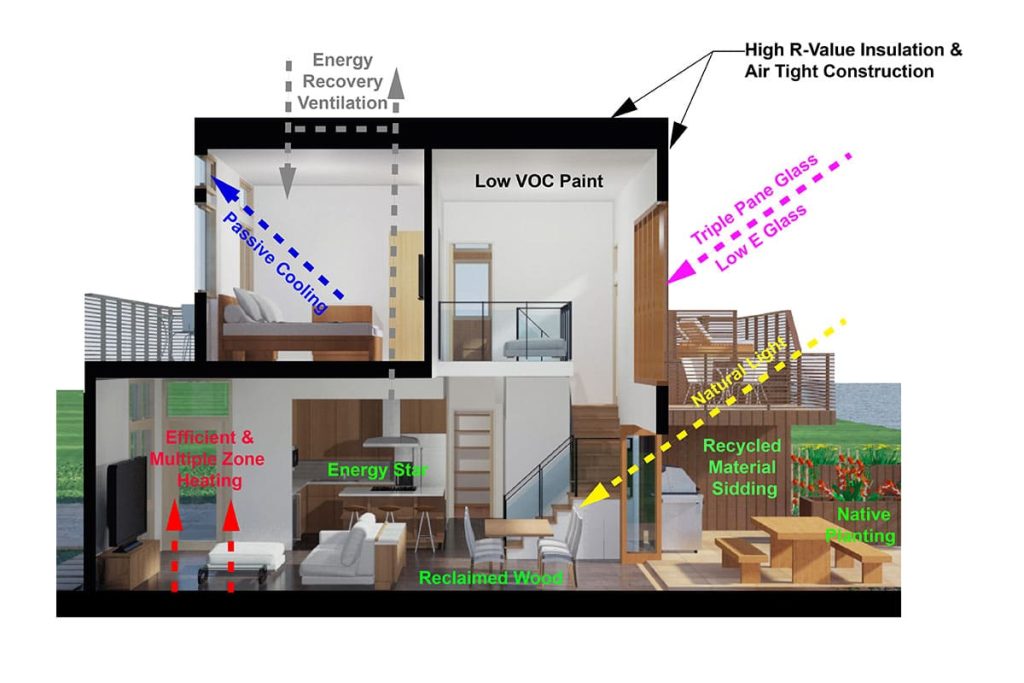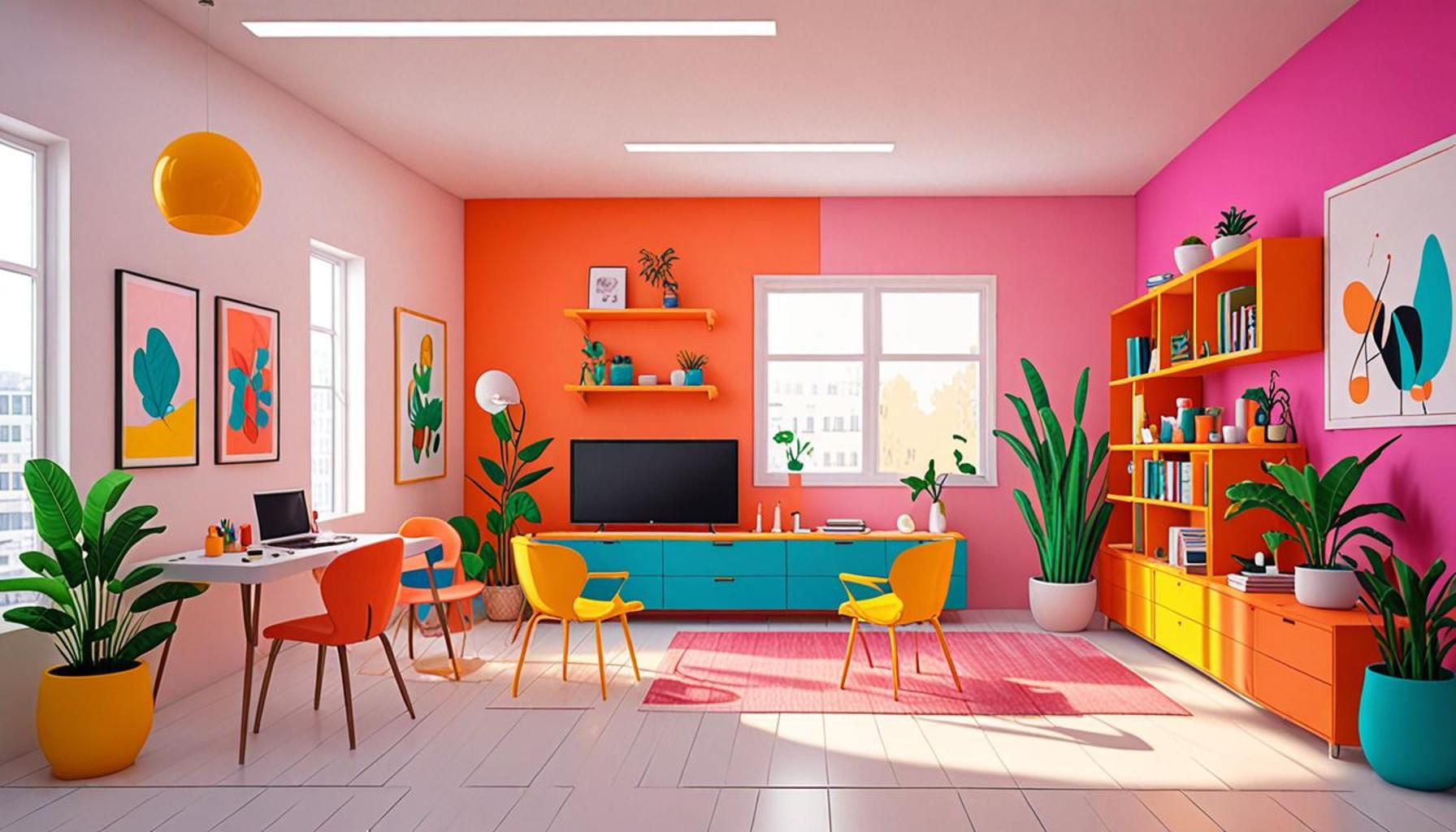Minimalism and Sustainability: How Space Optimization Contributes to an Ecological Lifestyle

The Intersection of Minimalism and Sustainability
Minimalism is not merely a design aesthetic; it is a transformative philosophy advocating for a lifestyle that emphasizes simplicity, purpose, and conscious living. In an era marked by profound environmental challenges—ranging from climate change to crippling waste management crises—integrating sustainability into our daily practices is vital. By opting for a minimalist approach, individuals can significantly reduce their ecological footprint while enhancing their well-being.
At its core, minimalism promotes a more intentional lifestyle, where every choice is made with thoughtfulness and foresight. Below are several key elements illustrating how minimalism fosters a sustainable future:
- Reduced Consumption: Minimalism encourages individuals to purchase fewer yet high-quality items, which often last longer and serve multiple purposes. For example, instead of buying several cheap clothing items, one might invest in a few well-made garments that adhere to sustainable practices, thus reducing the demand for fast fashion.
- Lower Waste: By prioritizing quality over quantity, minimalists can significantly cut down on the waste produced. This shift includes opting for products with minimal packaging or those made from recyclable materials. In the United States, where an estimated 292.4 million tons of waste were generated in 2018 alone, every reduction makes a difference.
- Energy Efficiency: Smaller living spaces, typical of minimalist lifestyles, generally require less energy for heating and cooling. This directly correlates with lower utility bills and a reduced carbon footprint. For instance, tiny homes have gained popularity across the nation, showcasing how living in compact spaces can align luxury with sustainability.
- Mindful Living: The minimalist lifestyle instills a deep awareness of consumer behavior, prompting individuals to evaluate their needs versus wants. This mindfulness often leads to more sustainable choices, such as opting for local produce or second-hand goods, which also support smaller economies.
In the United States, the adoption of minimalist principles aligns with a burgeoning consciousness regarding ecological issues. The necessity to combat environmental challenges has never been more urgent, especially within urban environments where population density creates increased waste and pollution. By exploring how space optimization can lead to a more ecological lifestyle, individuals are inspired to reconsider their living habits, making room for sustainability in their daily lives.
Ultimately, the marriage of minimalism and sustainability offers practical, transformative solutions for a greener future—not only for oneself but also for the planet. As urban centers continue to grow and environmental issues escalate, embracing these principles can pave the way for collective change, leading to healthier communities and a sustainable world.
DISCOVER MORE: Click here to learn how minimalism can streamline your transition to a paperless life</

Choosing Quality Over Quantity
At the heart of the minimalism movement lies a fundamental principle: choosing quality over quantity. In a consumer culture that often promotes the acquisition of more, minimalism encourages individuals to be selective with their purchases. This intentional approach not only enhances personal satisfaction but also contributes to a more sustainable lifestyle. The act of purchasing less frequently allows for a deeper consideration of each item’s environmental impact, steering individuals toward products that are sustainably sourced and ethically produced.
Research indicates that the average American throws away approximately 81 pounds of clothing per person each year. This staggering figure highlights the severe implications of fast fashion, where clothes are produced rapidly and often with little regard for environmental consequences. By choosing fewer pieces that are versatile and made to last, minimalists can combat this trend, opting for brands that prioritize sustainable practices—like using organic cotton or recycled materials.
In addition to conscious clothing choices, minimalism extends to various aspects of daily life, including home furnishings, kitchenware, and personal items. Rather than acquiring a multitude of products that may serve similar functions, the minimalist approach advocates for multifunctional items that streamline living spaces. For instance, a well-crafted table could serve as both a work desk and a dining spot, reducing the need for multiple pieces of furniture and, consequently, minimizing resource consumption.
Prioritizing Longevity
Emphasizing longevity over immediate gratification often leads to a demand for higher-quality products, which can be a boon for the environment. Items designed to last typically undergo more rigorous production standards, thus lessening their potential footprint. This practice directly contrasts with the throwaway culture perpetuated by cheaper alternatives. According to the EPA (Environmental Protection Agency), products with shorter lifespans contribute significantly to landfills, which can be mitigated by making mindful consumer decisions.
Moreover, the rise of the circular economy—a model that emphasizes recycling, reusing, and repurposing goods—aligns perfectly with minimalist principles. Minimalists often find joy in thrift shopping and sharing economies, engaging with local communities to find second-hand items that still hold significant value. This not only helps keep items out of landfills but also supports businesses that focus on sustainability.
The Ripple Effects of Minimalism
Making conscious decisions in your consumption habits has a ripple effect on broader societal behaviors. When individuals prioritize minimalism, they inspire others to rethink their own practices, leading to a robust community centered around sustainability. Additionally, the demand for eco-friendly products often encourages companies to enhance their manufacturing processes, ultimately promoting a more sustainable market landscape.
As awareness around sustainability grows, exploring the connections between minimalism and ecological living becomes increasingly relevant. This synergy not only supports individual wellness and happiness but also fosters a collective movement towards a healthier planet. By optimizing space and resources, minimalists are paving the way for sustainable lifestyles that can withstand the challenges of contemporary living.
Understanding Minimalism’s Role in Sustainable Living
Embracing minimalism extends far beyond merely decluttering one’s home. It fosters an ecological mindset that reshapes how individuals approach consumption. When we prioritize fewer possessions, we not only reduce waste but also lessen the demand for natural resources. This paradigm shift teaches us to appreciate the value of quality over quantity, aligning our choices with sustainable practices.One vital aspect of minimalism is space optimization. By designing our living spaces to accommodate only essential items, we can create environments that are not only aesthetically pleasing but also ecologically responsible. For instance, multifunctional furniture—such as sofas that convert into beds or tables that serve as storage—enables residents to make the most of smaller footprints, leading to less energy usage and resource depletion.Moreover, streamlined living spaces encourage mindful consumption. When homes are filled with only carefully chosen items, there’s a natural inclination to purchase less frequently. This intentionality impacts local economies and communities positively, as consumers tend to choose sustainable products and support eco-friendly brands over mass-produced goods. Thus, adopting a minimalist approach may lead to an incremental reduction in environmental impact. The less we consume, the lower our carbon footprint becomes. Furthermore, when each item is utilized to its fullest potential, it extends its life cycle, thereby contributing to a sustainable lifestyle that benefits both the individual and the planet.
| Category 1 | Category 2 |
|---|---|
| Ecological Consumption | Focuses on purchasing sustainably made items that are essential to one’s lifestyle. |
| Space Efficiency | Encourages the use of multifunctional furniture to reduce footprint and maximize living areas. |
Engaging with these principles not only aligns personal values with ecological responsibility but also creates an opportunity to inspire others. By demonstrating a commitment to sustainable living through minimalism, individuals can advocate for broader social change.
DIVE DEEPER: Click here to discover more
Creating a Sustainable Mindset
Minimalism is more than an aesthetic choice; it fosters a sustainable mindset that empowers individuals to rethink their relationship with possessions and the environment. This mindset shift hinges on the realization that less is often more, extending beyond material goods to encompass all facets of life, including time, energy, and relationships.
By engaging in minimalism, people develop an acute awareness of their consumption patterns. This journey often starts with decluttering physical spaces, which can psychologically translate into a cleaner, more organized mind. Several studies demonstrate that clutter can lead to feelings of stress and anxiety, which starkly contrasts with the calm invoked by minimalist living. By reducing physical distractions, individuals often find themselves naturally gravitating toward more environmentally friendly practices, such as reducing waste, recycling, and conserving energy.
Enhancing Energy Efficiency
One significant aspect of adopting a minimalist lifestyle is the opportunity to improve energy efficiency in homes. Minimalists tend to favor open spaces with fewer furnishings, which can lead to better natural light flow and reduced reliance on artificial lighting. According to the U.S. Department of Energy, optimizing daylight usage can reduce energy consumption by as much as 80% during daylight hours. Furthermore, choosing high-quality, energy-efficient appliances becomes easier with less clutter and a focused approach to what is truly necessary.
For instance, the concept of a minimalist home often embodies features like energy-efficient heating and cooling systems, which further decrease carbon footprints. Homeowners who embrace sustainability may opt for solar panels as an investment in both quality and longevity. Although the initial investment can be substantial, many find that the long-term savings in energy costs vindicate their decisions, while also providing cleaner energy options for future generations.
Transport and Mobility in Sustainable Living
Minimalism also influences transportation choices, encouraging individuals to rethink how they travel. The minimalist ethos often leads to a preference for walking, cycling, or using public transportation, strategies that significantly reduce carbon emissions. For instance, bicycles produce zero emissions and require minimal resources to manufacture, thus embodying sustainable living principles. According to the League of American Bicyclists, a single commuter who switches to cycling instead of driving can reduce their carbon footprint by over 1,400 pounds per year.
Moreover, the rise of car-sharing programs and electric vehicle options aligns seamlessly with minimalist attitudes towards ownership and possession. Instead of owning a vehicle that often sits unused, individuals can opt for shared mobility solutions that encourage a communal approach to transportation while lowering the overall number of cars on the road, thereby reducing pollution and congestion.
A Community Ethos
Minimalist principles often create opportunities to build community ties centered around sustainability. Local exchanges, repair workshops, and community gardens thrive in minimalist environments where shared resources and collaboration replace individual ownership. Such communities not only foster a spirit of cooperation but also significantly reduce the ecological footprint of their members. Initiatives like community-supported agriculture (CSA) allow consumers to purchase seasonal produce directly from local farmers, minimizing transportation emissions while supporting regional economies.
As minimalism weaves itself into the fabric of personal and communal living, it cultivates a platform for broader ecological initiatives that challenge conventional models of consumption. Ultimately, the very essence of minimalism serves as a catalyst for fostering a sustainable lifestyle that promotes well-being—both for individuals and the environments they inhabit.
DISCOVER MORE: Click here to learn how decluttering can change your life
Embracing Minimalism for a Sustainable Future
In conclusion, the intersection of minimalism and sustainability offers a profound opportunity for individuals and communities to redefine their consumption habits and enhance their ecological impact. By adopting a minimalist lifestyle, people consciously choose to prioritize what truly matters, which often leads to reduced waste, energy efficiency, and greater environmental stewardship. This shift not only benefits personal mental health through decluttering but also aligns perfectly with the pressing need for sustainable living practices.
As we look toward the future, the principles of minimalism—such as maximizing space, optimizing resources, and embracing communal solutions—become essential in combating climate change and fostering a healthier planet. Simple changes, like rethinking transportation choices and investing in energy-efficient homes, ripple outwards, creating a significant impact when adopted collectively. The growing trend of community-focused initiatives reflects a shared ethos that prioritizes sustainable practices and mutual support.
Ultimately, embracing minimalism is not just about living with less; it is about making room for a sustainable lifestyle that values ecological balance and conscious consumption. As we embark on this journey toward minimalism, we not only pave the way for a more fulfilling life but also cultivate a flourishing planet for future generations. With each small change, we enhance our ability to live harmoniously with nature, ensuring that the pursuit of a satisfying life doesn’t come at the expense of our environment.


